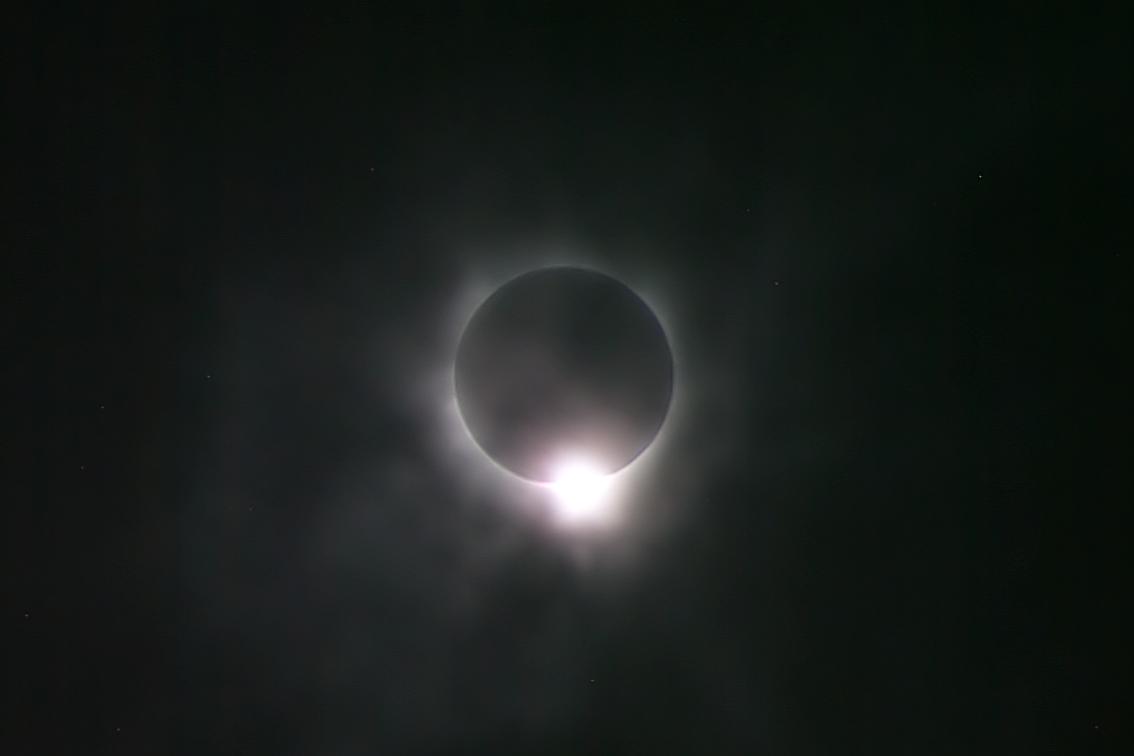
March 18, 2015, by Nicola Royan
Eclipses and comets and portents (oh my)
Contrary to popular opinion medieval people did not think that the world was flat. Educated people worked on an Aristotelean idea that the world was round and that it had different zones (including places that were either too hot or too cold to live in).
However, medieval people, just in Antiquity, did not know that the earth revolves around the sun, and thus events such an eclipse, where the sun ‘disappears’ for a while, were clearly noteworthy (just as they are today). Bede tells us about an eclipse in AD 664 which is still remembered at the time when he is writing his Ecclesiastical History of the English People around 735. The eclipse is followed by a devastating pestilence – so severe that some of the newly converted Anglo-Saxons consider going back to their pagan gods. The notion that celestial phenomena could be ‘read’ as portents of disastrous events can be found in various early medieval texts, including Gregory of Tours and Bede. However, these are not always solar eclipses, more likely comets.
It appears that comets functioned as portents of disaster more generally. The association of comets with epidemics and/or battles goes back to the sixth-century author Isidore of Seville’s Etymologies, in which he states that comets mark the coming of pestilence and war. This idea was adapted by Bede in his influential On the Nature of Things:
Comets are stars with flames like hair. They are born suddenly, portending a change of royal power or plague or wars or winds and heat.
Still, eclipses and comets are not just ‘supernatural’ events that had to be accepted for medieval writers – they did try to understand why and how they happened. So, Bede in The Nature of Things tells us that eclipses cannot be seen in all parts of the world at the same time because of the earth’s curvature. Solar eclipses, he correctly states, are caused by the intervention of the moon.
With that knowledge, it was possible to predict eclipses, and probably because of that they were not always seen as significant in human events. For instance, Walter Bower records an eclipse in Scotland in 1433 – an event which he experienced – like this:
In this year there was a wonderful eclipse of the sun on 17 June about the third hour in the afternoon. For half an hour it was exceedingly dark like night, so that nothing could be seen by the human eye. Hence it was commonly called the black hour. (Scotichronicon XVI: 23)
In the main witness for this chronicle, produced under Bower’s supervision at Inchcolm Abbey in the Forth, this comment appears in a side note beside a chapter on condemning Lollardy. Although from its position we might wish to infer that Bower sees such unnatural events as reflecting the heterodoxy of the Lollards, there’s no evidence for that. There is no attempt in the phrasing to tie the eclipse to any other event in Scotland, and nothing results from it; Bower’s condemnation of Lollardy lasts for three chapters, and – in chronicle terms – for over a year, since chapter 20 begins in 1432. It is rather that the eclipse occurs before the events of the next chapter, an English embassy in October 1433.
An eclipse, therefore, is an interesting event: comets, on the other hand, were slightly different.
Further Reading:
C. Kendall and F. Wallis (trans): Bede: On the Nature of things and Times. Liverpool 2010.
P. Darby: Bede and the End of Time. Farnham 2012.
D.E.R. Watt et al. (eds) Walter Bower: Scotichronicon 9 vols. Aberdeen and Edinburgh 1989-98, vol. 8 (1989).
Image credit: RawheaD Rex on Flickr

[…] concept of ominous portent attached to the mysterious dark miracles science calls eclipses. Over 1,000 years ago phrases like “the dark hour” or “miraculous cataclysm” were commonly used […]